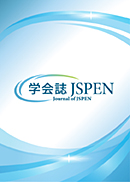Volume 1, Issue 1
Displaying 1-12 of 12 articles from this issue
- |<
- <
- 1
- >
- >|
-
2019 Volume 1 Issue 1 Pages 1
Published: 2019
Released on J-STAGE: August 16, 2019
Download PDF (508K)
-
2019 Volume 1 Issue 1 Pages 2
Published: 2019
Released on J-STAGE: August 16, 2019
Download PDF (560K) -
2019 Volume 1 Issue 1 Pages 3
Published: 2019
Released on J-STAGE: August 16, 2019
Download PDF (640K)
-
2019 Volume 1 Issue 1 Pages 4-12
Published: 2019
Released on J-STAGE: August 16, 2019
Download PDF (1131K) -
2019 Volume 1 Issue 1 Pages 13-23
Published: 2019
Released on J-STAGE: August 16, 2019
Download PDF (1764K) -
2019 Volume 1 Issue 1 Pages 24-32
Published: 2019
Released on J-STAGE: August 16, 2019
Download PDF (1640K)
-
2019 Volume 1 Issue 1 Pages 33-37
Published: 2019
Released on J-STAGE: August 16, 2019
Download PDF (712K) -
2019 Volume 1 Issue 1 Pages 38-41
Published: 2019
Released on J-STAGE: August 16, 2019
Download PDF (1433K)
-
2019 Volume 1 Issue 1 Pages 42-46
Published: 2019
Released on J-STAGE: August 16, 2019
Download PDF (1119K) -
2019 Volume 1 Issue 1 Pages 47-52
Published: 2019
Released on J-STAGE: August 16, 2019
Download PDF (1131K)
-
2019 Volume 1 Issue 1 Pages 53-56
Published: 2019
Released on J-STAGE: August 16, 2019
Download PDF (707K)
-
2019 Volume 1 Issue 1 Pages 57
Published: 2019
Released on J-STAGE: August 16, 2019
Download PDF (488K)
- |<
- <
- 1
- >
- >|
